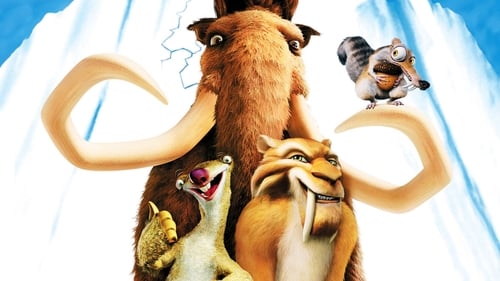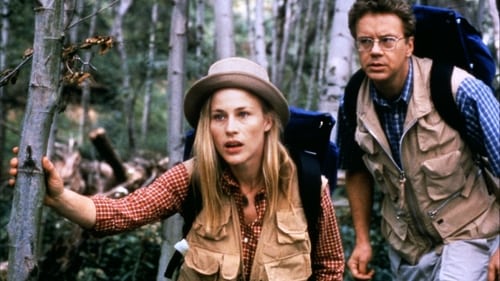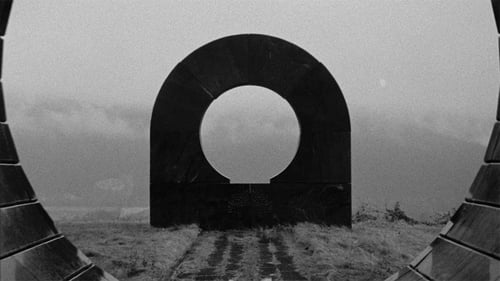Vývoj člověka III. (1955)
ジャンル : ドキュメンタリー
上映時間 : 0分
演出 : Fedor Kaucký
脚本 : Fedor Kaucký
シノプシス

2万年前の地球。寒さを避けて南へと移動する動物たちとは反対に、孤独を愛するマンモスのマニーだけは北へ向かう。仲間に置いて行かれ、身の危険を感じたナマケモノのシドはマンモスといれば安心とマニーについていく。その頃、人間たちの小さな集落をサーベルタイガーのソト率いる一軍が襲っていた。赤ん坊のロシャンを抱いて必死で逃げる母ナディアだったが、川に転落、母子に気づいたシドにロシャンを託し、ナディアは命を落とす。無関心のマニーをよそに、シドはロシャンを人間のもとに届けると言い出すと、そこへソトの仲間ディエゴが近づいてきた。

地球を飛び立った宇宙船は1年余りの宇宙航行の末、とある惑星に不時着した。乗組員のテイラーたちは沈没してしまった宇宙船をあとにし、その陸地を彷徨い歩くと猿人たちが人間狩りをしている驚愕の光景を目にする。この星では高等動物の猿が、口の聞けない下等動物の人間を支配していたのだ。テイラーたちも捕まり、奴隷のように理不尽な扱いを受ける。しかし、テイラーはチンパンジーのジーラ博士とコーネリアス博士の理解と協力を得て、同じ人間の女性ノヴァと共に逃亡、新天地を探し求めていく。

A philosophical burlesque, Human Nature follows the ups and downs of an obsessive scientist, a female naturalist, and the man they discover, born and raised in the wild. As scientist Nathan trains the wild man, Puff, in the ways of the world - starting with table manners - Nathan's lover Lila fights to preserve the man's simian past, which represents a freedom enviable to most.

地球年で約20億年後の未来を生きる人類第18世代の人間が、20世紀に生きる第1世代の我々に語りかけてくる壮大な叙事詩。天文学者たちの発見により人類に滅亡が迫っていることが判明。

40, 000 years ago the steppes of Eurasia were home to our closest human relative, the Neanderthals. Recent genetic and archaeological discoveries have proven that they were not the dim-witted cave dwellers we long thought they were. In fact, they were cultured, technologically savvy and more like us than we ever imagined! So why did they disappear? We accompany scientists on an exciting search for an answer to this question and come to a startling conclusion …

Nova and National Geographic present exclusive access to an astounding discovery of ancient fossil human ancestors.

The main character is crazy about about depicting various anomalies in art. Accidentally he finds a cinematography archive which makes him advance a completely new theory on the reasons why humans became bipedal. Yufit proceeds with the plot by describing a scientist struggling against the epidemic wave of anomalies in the physical and mental world thematically started in his other films. This time the struggle takes place on the background of paleoanthropology, psychoanalysis and modern art. As materials of the Museum of Anthropology and other archives are included in the film, it oversteps the boundary between a feature film and documentary.

A feature documentary about the journey of mankind to discover our true force and who we truly are. It is a quest through science and consciousness, individual and planetary, exploring our relationships with ourselves, the world around us and the universe as a whole.

The cutting edge group known as transhumanists see a beautiful future brought about by artificial intelligence, life extension, and cybernetics. What one must realize before getting carried away with such utopian dreams is that transhumanism was born out of the elitist pseudo-science eugenics. This documentary provides vital information on the history of eugenics and its new cutting edge transformation.

Explores the story behind the discovery of an early primate fossil, Darwinius masillae, nicknamed Ida, in a shale quarry in Germany. The fossil is believed to be around 47 million years old, and is extraordinarily well-preserved. Originally unearthed in 1983, Ida lay in the hands of a private collector for 20 years before it was shown to a Norwegian paleontologist, Dr Jørn Hurum. Realising that Ida could turn out to be a significant missing link between modern primates, lemurs and lower mammals, he persuaded the Natural History Museum in Oslo to purchase the fossil and assembled an international team of experts to study it. Their findings were announced in a press conference and the online publication of a scientific paper on 19 May 2009.

Propelled by Claude Cloutier’s signature drawing style and absurdist humour, this animated short offers an overview of the evolution of life on Earth from rock to human, with some surprising twists in between.

NOVA's groundbreaking investigation explores how new discoveries are transforming views of our earliest ancestors. Becoming Human explores the origins of us -where modern humans and our capacities for art, invention, and survival came from, and how our social history led to 3-5% of our genetic heritage being Neanderthal. Featuring interviews with world-renowned scientists, footage shot in the trenches as fossils were unearthed, and stunning computer-generated animation, Becoming Human brings early hominids to life, examining how they lived and how we became the creative and adaptable modern humans of today.
In gripping forensic detail, we meet: Selam, the amazingly complete remains of a 3 million year-old child, packed with clues to why we split from the apes, came down from the trees, and started walking upright; Turkana Boy -a tantalizing fossil of Homo erectus, the first ancestor to leave Africa and colonize the globe. What led to this first great African exodus?


The events and coincidences that led to rapid advances in human intelligence 50,000 years ago.

Looking at whether the history of early human evolution should be rewritten. For decades, most experts have been convinced that Africa is the cradle of mankind and many fossil finds from Kenya, Ethiopia, South Africa and Chad seemed to prove it.

Can Homo sapiens evolve into Homo spatius? For over 50 years now, we have been testing our human nature in our effort to conquer outer space, and still 30 years away from a possible human exploration of Mars, a question remains: Can our body take such travels? Will it ever adapt? Combining human adventure and the exploration of the human body, this film offers unique insights into the physical and psychological effects of space travel on the Astronauts and measures the impact on medical sciences.

In Morocco, new excavations on the site of Jebel Irhoud upset the generally accepted view of the dating of the appearance of man.

For Millions of years, our planet has been floating in space. Millions of creatures have lived on its surface. Many a quaint being was among them, but they affected only our, human imagination, for in the evolutionary struggle we are the only ones who have obtained the advantage of reason.

Science Breakthroughs: Homo Naledi Discovered in 2013, new and puzzling finding of small-skulled fossils of Homo Naledi has scientists trying to understand whether Homo Sapiens lived at the same time as Homo Naledi, and how Homo Naledi communities may have lived.

The story of the evolution of life on Earth in animated form.














